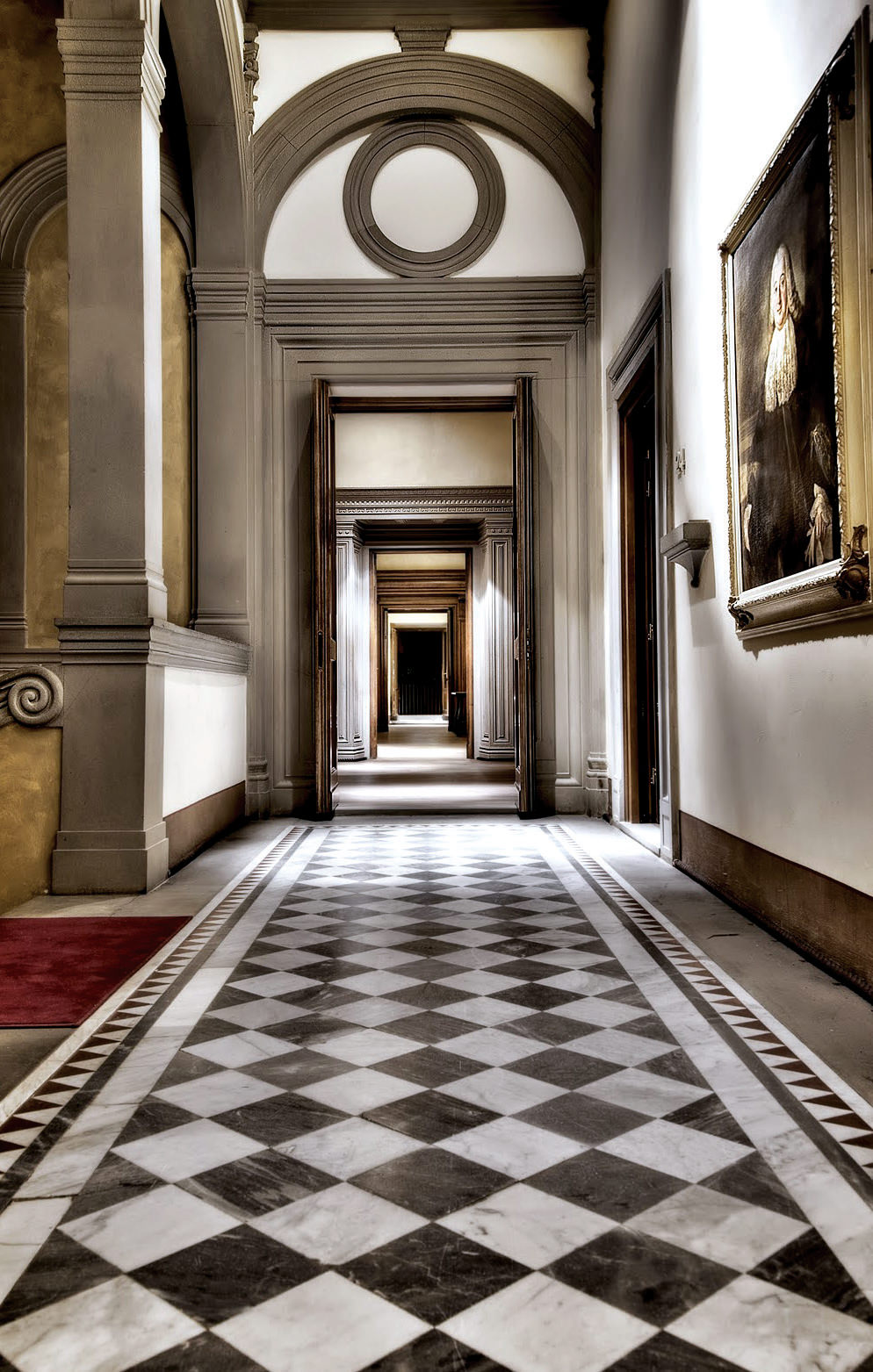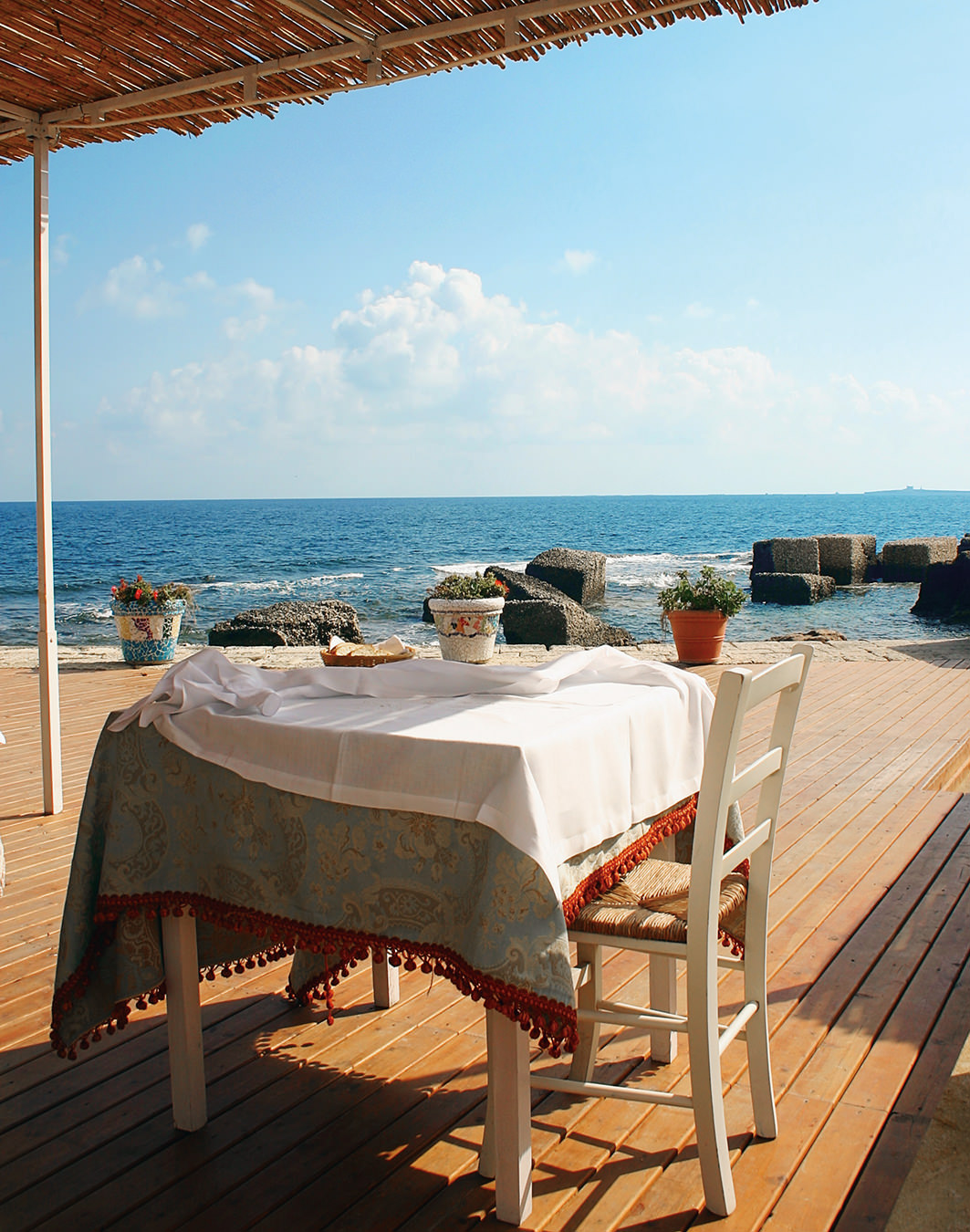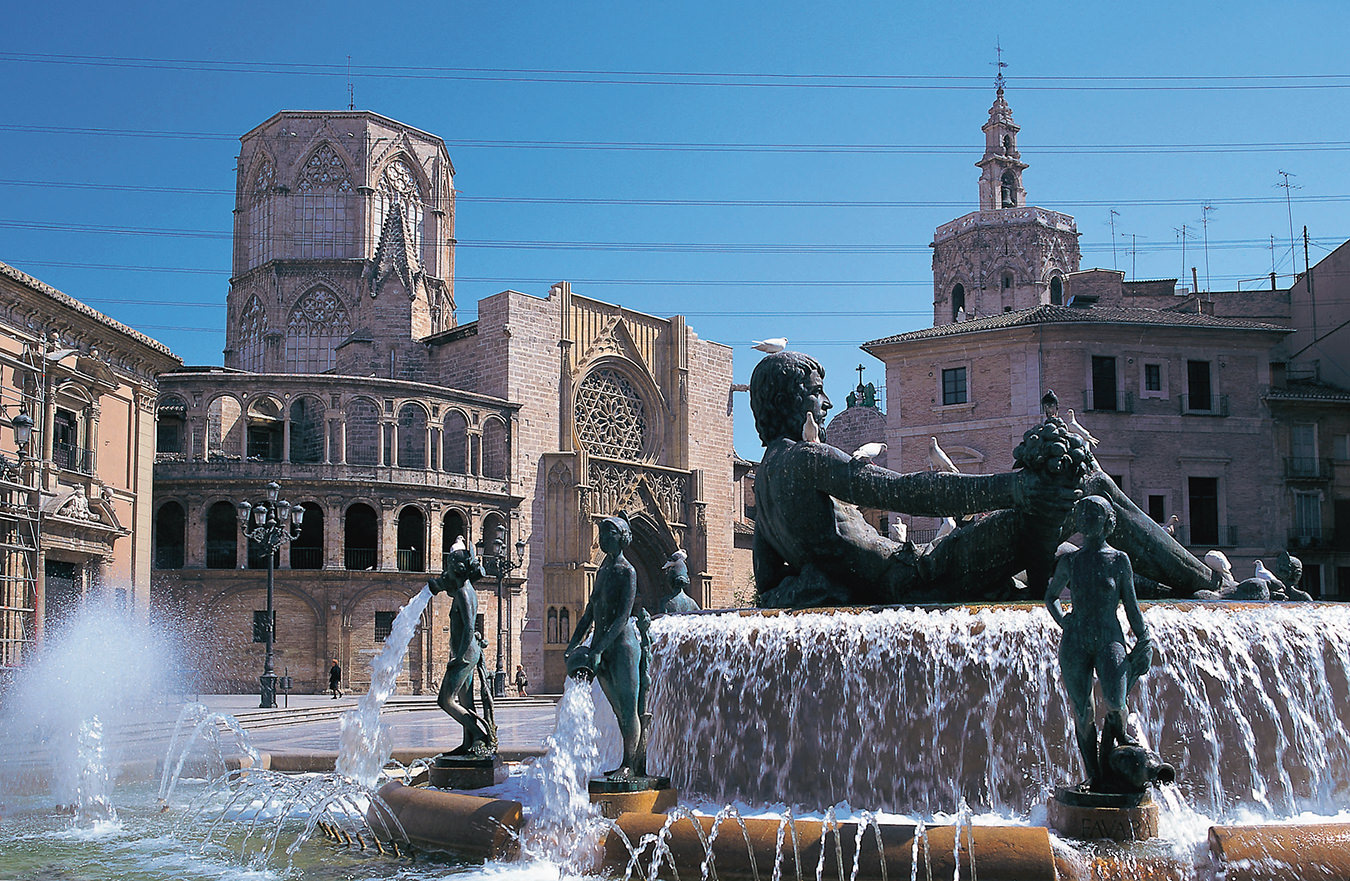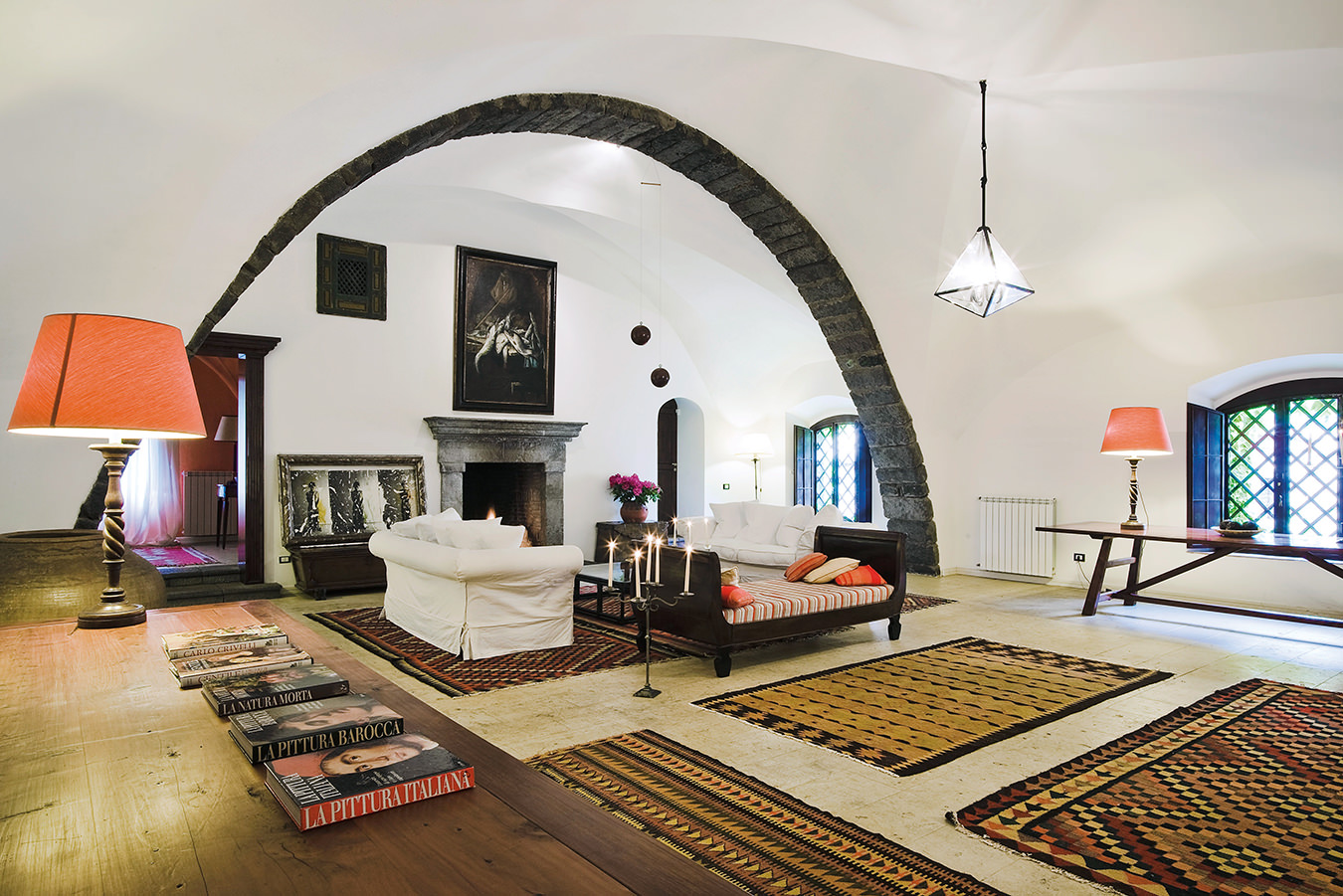San Gimignano
A towering hill town.
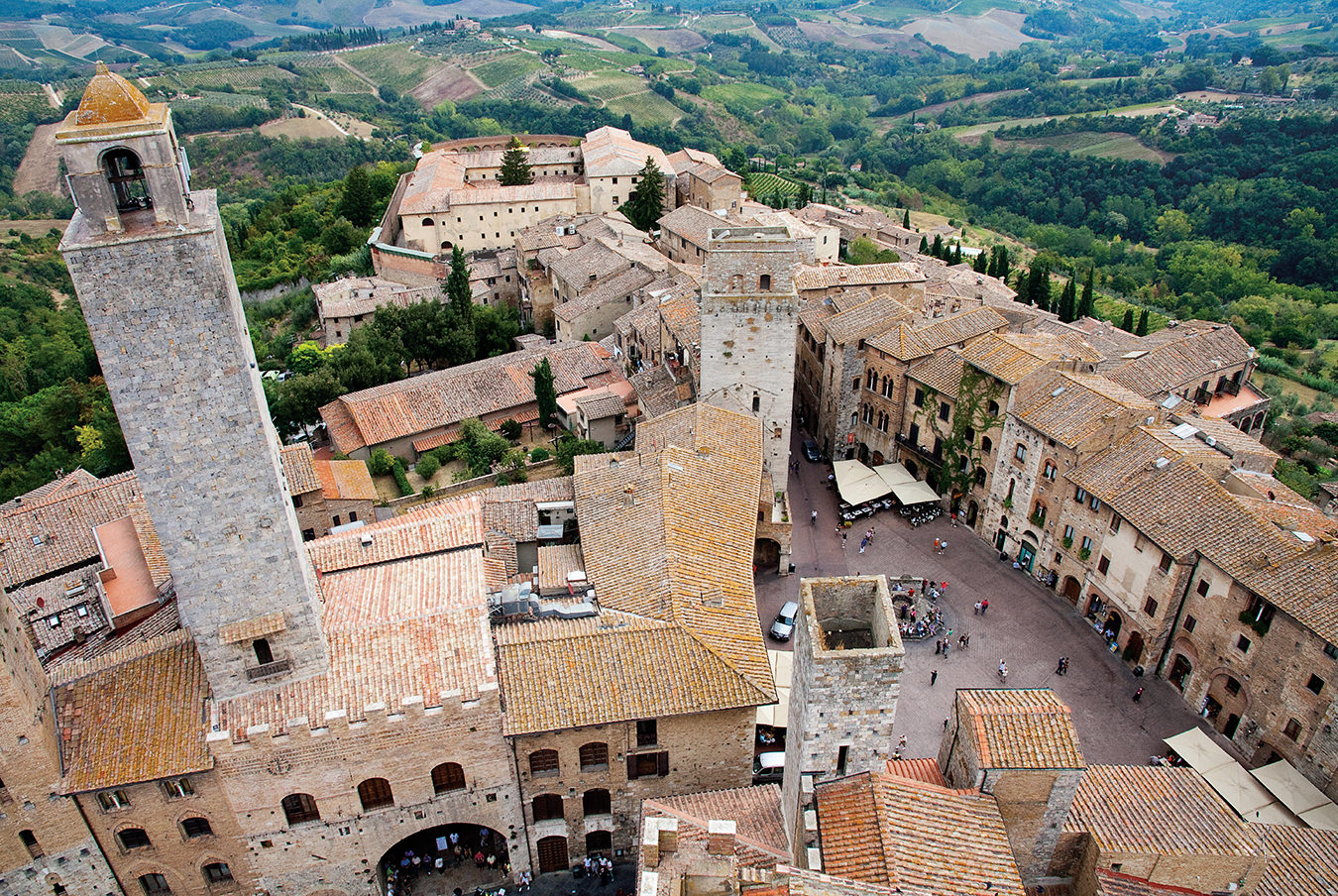
Photo ©Karin Jehle/iStockPhoto.
My first visit to San Gimignano does not begin well. A wrong turn in a rental car and suddenly I am driving down narrow stone streets devoid of vehicles. Not cool. The narrow lanes of this venerable Tuscan town are intended for strolling tourists, or maybe a donkey if you’ve got one. Visitors are not allowed to drive right into the medieval centre. Yet that’s where I appear to be headed.
It’s not the first invasion San Gimignano has suffered. Once fought over by warring Tuscan dukes, this picturesque medieval stronghold, which is about 55 kilometres south of Florence, has been left with a legacy of stone towers that once served as both lookouts and symbols of family prestige. Many of the surviving towers have since encouraged hordes of fresh attackers, some of whom occasionally barge through town in rented horseless carriages.
Sticking the car beside an old church in a quiet piazza near the edge of town, I dash over to a little restaurant. A slim woman with red hair pulled back into a ponytail greets me. “I’m not supposed to be in here with a car, am I?” I ask.
Her name is Genziana Pompei, and her restaurant is called Locanda di Sant’Agostino, after the nearby church. “Where did you want to go?” she asks.
My destination is Hotel Vecchio Asilo, located somewhere seven kilometres out of town. “Ah,” she says. “Guido. The man with the blue eyes.”
Genziana gives me directions back out through the stone gates of San Gimignano, a UNESCO World Heritage site, and down a narrow country road to Ulignano, through rolling vine-covered hills to an S-curve where a little three-storey building stands. Guido Capezzuoli greets me at the door with a grin and a pat on the back, and helps haul my monstrous bag inside.
To approach San Gimignano via a winding Tuscan road is to be reminded of a storybook castle, making you the exotic sojourner bending your steps to a magical destination.
I had no way of knowing it then, but I had just made the best possible start in Tuscany. By choosing Vecchio Asilo, I had instantly acquired my own personal Tuscan villa, cheap. And thanks to my disastrous attempts at navigation, I now had friends in San Gimignano, too.
Most of us travel for beauty and novelty—often we return for friendship. Seeing new places is part of the allure. But building relationships can transform tourism into something deeper, forging a connection with a different part of the world.
Hotel Vecchio Asilo is all about that. Frankly, if you don’t come away feeling some sort of connection with Guido and the rest of the Capezzuoli family, you would have to be some sort of summertime Scrooge. I have now visited Vecchio Asilo many times, and last time the guests included Polpetta, a baby barn swallow that had fallen from its nest and was receiving bed and board. Guido not only provided fresh worms for breakfast, lunch, and dinner, he even cut their heads off so as not to give Polpetta indigestion.
The Capezzuoli family spent seven years renovating an old stone schoolhouse (Vecchio Asilo means “Old Kindergarten”) before opening the inn. Reviews tend to soar past favourable toward a more cult-like devotion. Yet prices are comparatively low. Why? According to the official Italian rating system, Vecchio Asilo is a one-star accommodation.
It’s a common misconception that Europe’s star-based rating systems are gauges of quality. Not so—the stars refer only to amenities. In order to obtain a second star, an Italian hotel building must contain two common areas, such as a breakfast room and a lounge. Vecchio Asilo has a gorgeous outdoor patio with a view of rolling vineyards, and also a lovely, quiet lawn. But no indoor lounge. So thanks to Italian bureaucracy, you get pampered in a little Tuscan paradise for less. (The Italian rating system has recently undergone a revamp, and according to the new rules, Vecchio Asilo could be considered a two-star accomodation—but Guido asserts, and who knows why, “We still acknowledge the same old-fashioned rules on tourism.” And so, one star.)
Down the road in San Gimignano, there’s a lot to see, and a lot of folks seeing it. The town itself is the most impressive sight, with its soaring towers and beautifully preserved stone streets. To approach its hilltop perch via a winding Tuscan road is to be reminded of a storybook castle, making you the exotic sojourner bending your steps to a magical destination—at least until you arrive and find out all the other exotic sojourners got there first and grabbed every parking spot. For those who want to stay in the heart of town and avoid such issues, Hotel L’Antico Pozzo is a charming converted convent located in a 15th-century palazzo; Dante once stayed there. But considering the glories of the Tuscan countryside, it’s no surprise that, like Vecchio Asilo, many of the most popular inns can be found in the surrounding area. Hotel Sovestro, located just southeast of San Gimignano, is for those who want a swimming pool and some pampering.

Photo ©Hubert Coia/iStockPhoto.
Tourist throngs have had the usual effect on the local business community. Souvenir shops, wine stores selling the famous local white (known as Vernaccia di San Gimignano), and even a torture museum have elbowed out more typical small-town enterprises. You don’t need to pay extra for torture, though—just try to find a newspaper. Buying regular groceries is next to impossible, but gelato shops are so common a Martian might think our veins run with the stuff.
Yet not all is lost. A weekly market offers some real local produce as well as relatively inexpensive clothing. And there are restaurants that serve more than pizza and gelato. I sample a couple. But my first daily stop is for coffee, and I know where to go for that.
I renew my acquaintance with Locanda di Sant’Agostino every day, sitting down for a lovely espresso in the quiet piazza, away from the bustling town centre. Genziana opened the place in 1995 when her children were still small. Now her four sons help her run the restaurant, along with a small staff. A second restaurant opened nearby in 2005. Its name, Cum Quibus di Pompei Genziana, is Latin for “Genziana Pompei and her sons”. “We started out being famous for our bruschette,” says Ludovico (son number two). He has hopes of a career in architecture—during the course of many visits over the years, I received updates on his progress at school. Until he graduates, I can confirm he makes a mean double espresso.
Every day I sip my coffee and watch the tourists trickle in for lunch. Locanda di Sant’Agostino is a bit out of the way, but those who stumble upon it seem particularly pleased with the offerings—pizzas, colourful salads, and rich pasta dishes. And yet, for some peculiar reason, I am content merely to sip my espresso, day after day. Years after my first accidental visit, I still haven’t picked up a menu. “Perhaps,” I finally tell Genziana on my most recent trip, “it’s time I tried something.”
“I think so,” she agrees.
Long, long past time. That day, I discovered that the family makes their own olive oil, ready to pour over a Mediterranean salad full of fresh vegetables and melon, and then comes the al dente pasta with ragù that is slow cooked and savoury beyond telling. I don’t why I was surprised. Perhaps when you find a restaurant simply by getting hopelessly lost, you don’t expect to get so damn lucky. It was a little like discovering that an old friend secretly plays Mozart concertos.
Nobody needs excuses to return to Italy. Still, the experience changes when you make personal connections. Next time I go to San Gimignano—soon, I pray—I don’t have to tell people I am vacationing in Tuscany. I can simply say, “I am off to visit friends.”
Top photo ©Karin Jehle/iStockPhoto.

